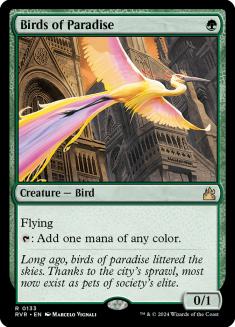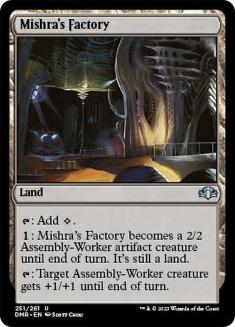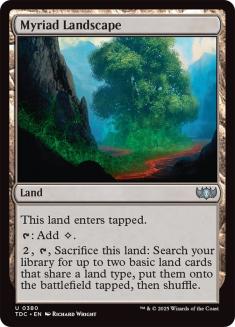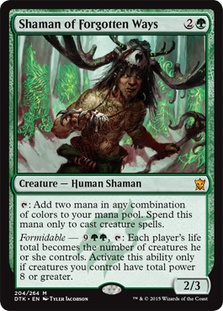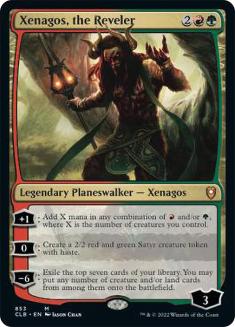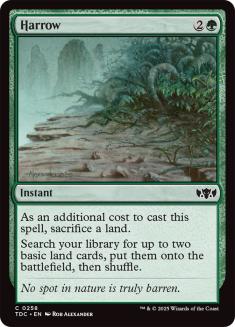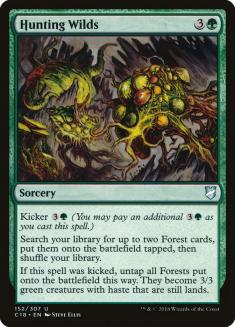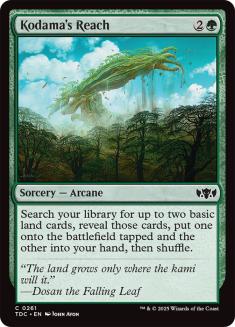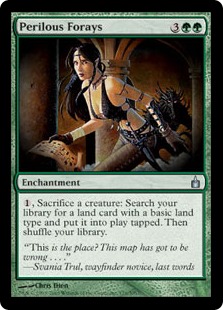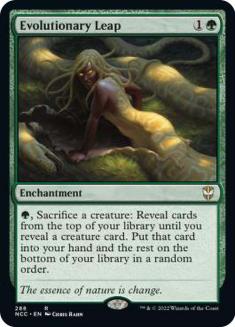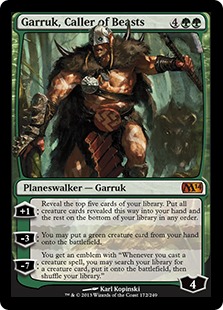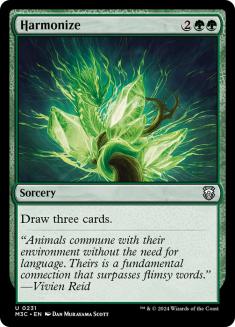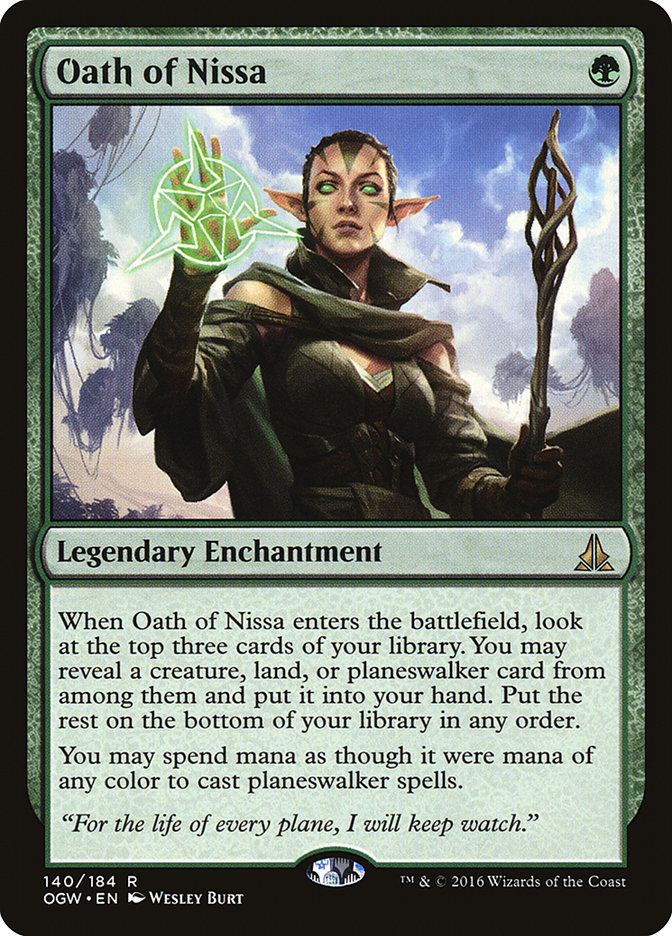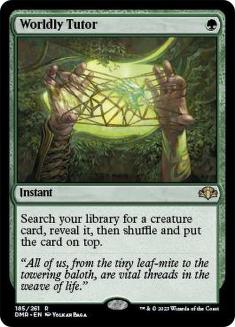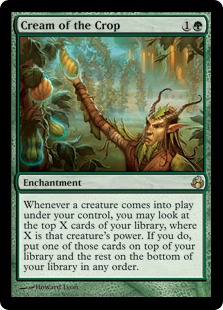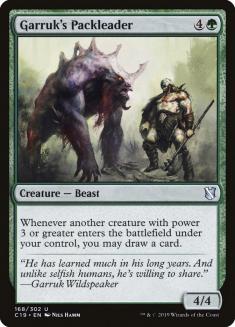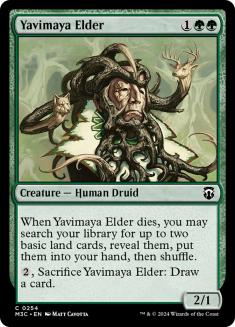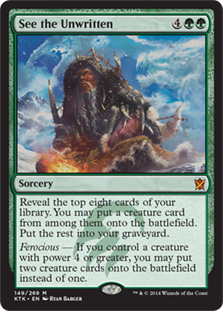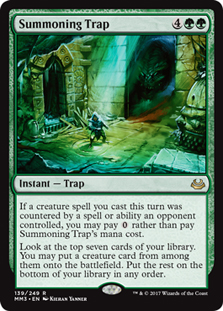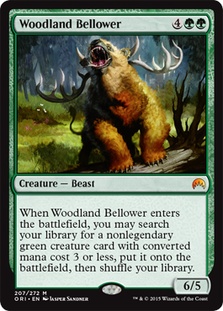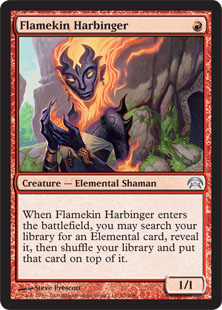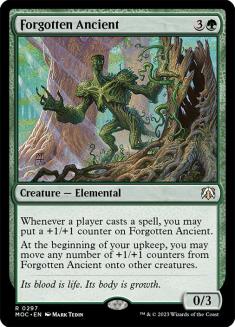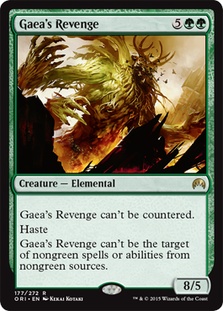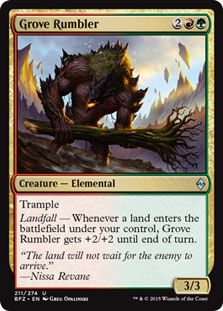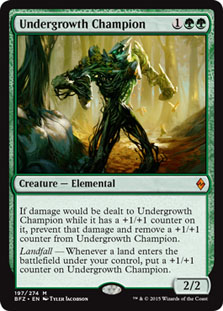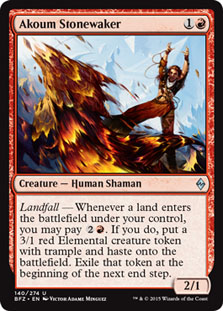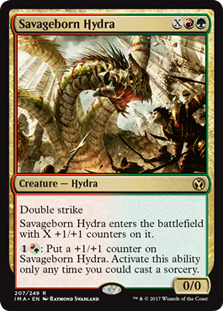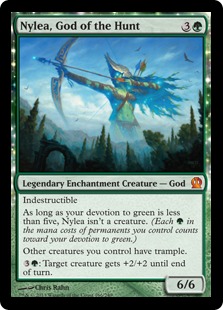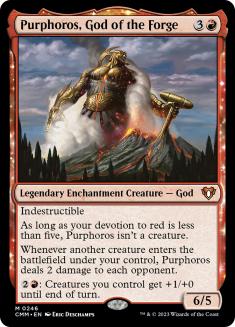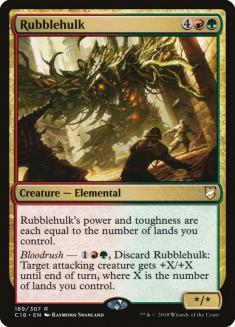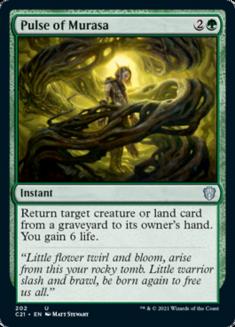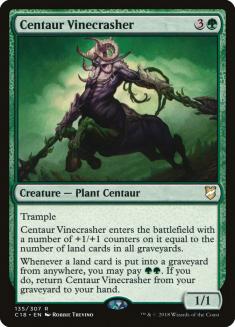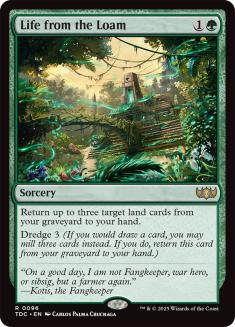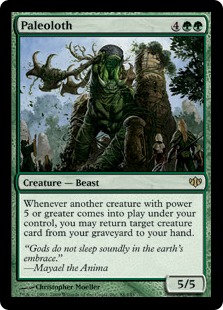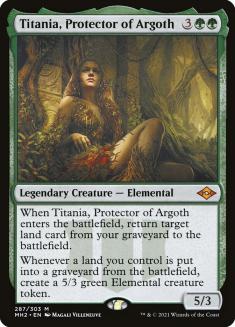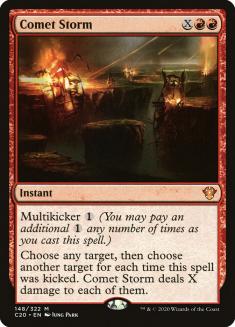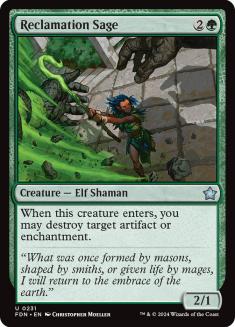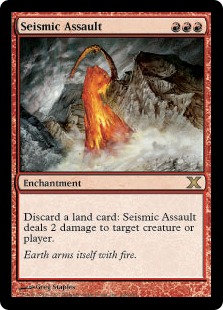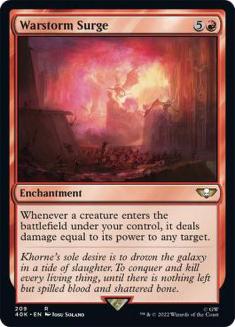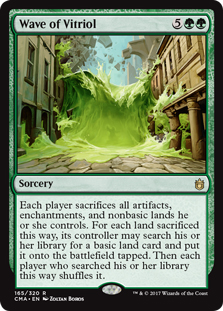It’s a monumental week in the USA. Yesterday the first presidential primary took place, the Iowa Caucus, presumably providing some data to go with months of speculation; in exactly one week we have the first primary election in New Hampshire, which is pretty cool too.
Then, this upcoming weekend is the Super Bowl, a yearly sport tradition that, best as I can tell, involves eating an unhealthy amount of wings while watching people get concussions in between high-end commercials for products and musical talents. If you’re a fan of bloodsport, the media has you covered right now.
Which, of course, means that this upcoming weekend is also Pro Tour Oath of the Gatewatch. I plan to check out the Pro Tour… I prefer my bloodsport to involve cardboard and a handshake at the end.
Or at least VR figurines and a Wookiee cry.
This week’s letter concerns a deck archetype of which I’m particularly fond: ramp. Ramp lets you do big things while everyone else is grinding out some marginal advantage. Generally, the downside of ramp strategies is that the spells which turbocharge your early game get less useful as time goes on, but Battle for Zendikar gave us a tool to fight that natural degradation. That tool is Omnath, Locus of Rage, and it’s our focus for this week’s column.
|
Dear Azami, I’m new to this whole “Commander thing” so I thought I’d just take a really cool looking card and see if I could brew with it using a ton of synergy. I decided to use Omnath, Locus of Rage because he works well with so many new cards and let’s face it, who doesn’t love big, huge dudes that spit fire everywhere. The deck list I came up with tries using several synergies as it ramps out large elementals and planeswalkers and threats and all that good stuff. Since I’m rather new to the format, I’m unsure of how successful this deck is/could be. It looks like a lot of fun but I’m sure there are many ways you can help make this deck as fun, competitive, and downright-cool as possible. Here’s the list: 13 Forest 7 Mountain Daniel |
While some archetypes are more challenging for a beginner, who might not have the best sense of the key plays to disrupt or what it looks like when the way is clear for a significant commitment of resources to the board, ramp is pretty straightforward. Since most groups have at least a social contract minimizing the use of Armageddon effects, developing your manabase is a good way to ensure you won’t have all your agency wiped with a single Wrath of God spell. And ramp makes it easy to keep up with the commander tax for Omnath, Locus of Rage, ensuring that you’ll almost always have access to your commander, even if you’ve otherwise run out of gas.
Daniel caught a couple of good interactions, some of which hadn’t made it into my own version of this deck. While I had the Elemental Bond tech, which not only is on-theme in a flavor sense but also turns landfall into card draw, I had overlooked the fact that Koth of the Hammer animates Mountains, which would then get all the land-creature benefits that Oath of the Gatewatch brought for us. Koth of the Hammer plus Embodiment of Insight, for example, lets you attack and still get the ramp from the untapping aspect.
But there were still some choices with which I disagreed, and still some cards I felt the deck was missing. They’re the basis of the changes I’ve made. Let’s start, as per my usual flow, with the lands.
Raise the Land Count
Out:
In:
For starters, I thought this deck was running too few lands. Omnath, Locus of Rage doesn’t mind flooding out as much as some other decks, because you can usually transform a topdecked land into a 5/5, and that’s a solid interaction. While 38 lands is great in most contexts, here I thought you could bump it up to 42 and be better off. It means your ramp spells will stay live longer and it means you’ll be hitting more lands off Oracle of Mul Daya and Courser of Kruphix. These are good things!
While Birds of Paradise isn’t a land, and thus perhaps don’t fit in this section, it’s the type of low-level ramp creature that generally gets used as a land equivalent, and in this deck it’s particularly wrong. Since Omnath, Locus of Rage has a direct interaction with lands, i.e. its landfall ability, playing mana creatures over lands and ramp spells leaves you more vulnerable to removal while not interacting well with your commander’s abilities. There are many decks in which the Birds can be a strong fit, but this isn’t one of them.
As for the other lands, I considered adding in Valakut, the Molten Pinnacle, but ended up deciding against it. The deck is only running ten Mountains, thanks to the nonbasics, and while that’s enough to get some benefit off Valakut, it’s not really enough to justify the cost of the card. Scapeshift may prove to be a player in the Modern metagame this weekend, after all.
I did want to add some nonbasics, though, so I brought in another creature-land (Mishra’s Factory) and another land you sacrifice for its effect (Myriad Landscape). The former combos well, not just with the Embodiments, but also Sylvan Advocate; the later combos well with Titania, Protector of Argoth, whom I’ll discuss in a later section.
Switch Up the Ramp
Out:
In:
I’m not a fan of Shaman of Forgotten Ways. Its victory condition just feels cheap to me, given the ban on Biorhythm, and I tend to dislike creature-restricted mana sources outside of dedicated creature decks, which this really isn’t. Plus, the Shaman suffers from the same drawback as Birds of Paradise, in that it would always be better to draw a land ramp card.
Now, those could be spells or creatures; it doesn’t really matter which. I chose spells, but you could just as easily use cards like Solemn Simulacrum and Wood Elves. I think spells offer better value, though, since the lands themselves provide better bodies. Thus, a spell like Harrow that gives you two landfall triggers and a land in your graveyard is better than a creature that leaves you with a 1/1 and only one landfall trigger. Kodama’s Reach is no Harrow, but it’s still a two-for-one, and that’s what you’re going for in Commander.
Perilous Forays is a cute addition. I don’t know the best way to use this particular interaction, but Perilous Forays plus Omnath, Locus of Rage and Lotus Cobra is a quick way to search out all your lands with basic subtypes, all while spitting out Lightning Bolts left and right. I wouldn’t do that regularly, since it neuters your later ramp spells, but even used judicially this interaction is a strong one.
And I had forgotten about the existence of Hunting Wilds, but that card works really well with the support that land creatures have seen in the last block. At its most basic it’s Skyshroud Claim or Ranger’s Path, but later you can use it to animate the lands permanently. With something like Sylvan Advocate, that’s a good thing.
Finally, I cut Xenagos, the Reveler. He’s a good card, and cute with Doubling Season, but without it he’s just another card that’s ramping you without giving you landfall… and the 2/2 tokens aren’t big enough to trigger your draw. There are better ways to take advantage of that slot.
Make the Draw More Sustainable
Out:
In:
One of the things I love about green is that it has great draw spells. At times, the wealth of choices can seem overwhelming. For that reason, I tend to try to restrict my options to draw engines that seem on theme. That’s why I brought in Garruk’s Packleader, for example; it replicated the effect of Elemental Bond. It’s also why I brought in Yavimaya Elder. For one more mana, it draws the same number of cards as Harmonize, but in a body you can recur, or chump with, or otherwise get value from before you cash it in.
Then there’s Cream of the Crop. It’s actually interesting to compare it to Evolutionary Leap and Oath of Nissa, two similarly priced enchantments. Now, both of those things draw you cards, and Cream doesn’t, this is true. But being able to stack the top of your library is very powerful, particularly when combined with Oracle of Mul Daya and Courser of Kruphix. In the end, that might draw you more cards. Plus, when you’re adding something like Elemental Bond into the mix, one landfall trigger gives you a free Impulse, only better. That’s pretty cool. Oath of Nissa just cantrips, while Evolutionary Leap requires fodder and can’t hit lands. In a deck like this, that’s not the type of sustained advantage you need.
Finally, there’s Garruk, Caller of Beasts. I get that it instantly goes ultimate with Doubling Season, and his emblem is quite powerful, but it’s not on theme. As such, it offers a huge boost in your threat profile without meaningfully advancing your core strategy… and I tend to avoid that particular cost ratio.
Stop Cheating
Out:
And speaking of Garruk, Caller of Beasts, ramp decks don’t really need to cheat creatures into play to the same degree required by more mana-constrained archetypes. When you can hard-cast basically anything, the mana discount offered by these types of spells is unnecessary…and with cards like Oblivion Sower, it can even hurt.
That’s why I cut See the Unwritten and Summoning Trap. They’re good, but they’re not necessary. Woodland Bellower, on the other hand, came out for a different reason: too few targets. I ended cutting four of its targets, and while the five remaining targets are all strong, it’s not worth devoting a slot to that effect. If you are, Green Sun Zenith is a better option in a deck not specifically structured around three-CMC green creatures.
Cut Some Elementals
Out:
I also don’t know that Omnath, Locus of Rage requires support for its Elemental ability. While those free Lightning Bolts are powerful, Omnath makes its own Elementals. As such, running lower-power cards that are primarily tied into the theme by their creature type seems like a use of slots that would be better shifted elsewhere. Some of these cards became lands, others became ramp spells, but they all became Omnath, Locus of Rage landfall triggers, and that should leave you with roughly the same density of threats.
That having been said, a few words on why I made some of these cuts. I cut Flamekin Harbinger for the same reason I cut Worldly Tutor: they’re card disadvantage. While the selection they offer is powerful, Cream of the Crop should provide a better version of it, and on a repeatable basis. These one-and-done tutor effects are far less good.
Grove Rumbler is not the strongest card. If I were running a card that got bigger from landfall, my choice would probably be Baloth Woodcrasher, because that thing is huge. Trample isn’t enough of a benefit to make up for the fact that the Rumbler is only going to be a 5/5 most turns, without significant assistance. Gaea’s Revenge is similarly situational. I have a fondness for that card, as it let me cut out of a draft early once, totally blowing out my Dimir opponent. It’s just a French vanilla card with situational shroud, and that’s a little below the ideal power level in a deck like this.
Forgotten Ancient and Undergrowth Champion are both strong with Doubling Season, but without specific +1/+1 counter synergies they’re just there to win the game. Omnath, Locus of Rage doesn’t really need a ton of help with that… although, as you’ll see, there are some ways to assist that are more on theme.
Change Up Your Baneslayers
Out:
In:
First, I had to cut Akoum Stonewaker. I like nothing about that card; if you want another landfall token generator, I would take Zendikar’s Roil over the Stonewaker. Yes, the Stonewaker triggers your Elemental Bond, but it self-exiles at end of turn, which even denies you the Omnath, Locus of Rage Lightning Bolt. Zendikar’s Roil at least sticks around… but honestly, neither is good enough for a slot.
Let’s talk about Savageborn Hydra. It’s big and it has double strike, but it doesn’t complicate the board all that much when you drop it. It’s nice that it’s a mana sink, but not at instant speed. It’s a combat juggernaut, but it can be chumped with ease. These are all strikes against the card.
Nylea, God of the Hunt, on the other hand, turns combat into a nightmare for your opponents. With plenty of mana, you can threaten a blowout with her pump ability, and that threat is generally enough to keep you from having to use the ability. Then, you can muck with combat on other people’s turns, swelling defensive blockers to take out the creatures with which they’re tangling, or to do extra damage for an unblocked attacker. And that’s not even the reason to run her; you run Nylea, God of the Hunt because she gives all your 5/5 Elementals trample, which is a very relevant ability in a deck like this.
Purphoros, God of the Forge is not that powerful. He’s not bad, mind you; his ability has a far better mana rate, and its general applicability across your board is great on attack or defense. But he’s a way to turn landfall triggers into damage, and he provides consistent pressure on enemy planeswalkers. While he’s there to win the game, he’ll give you plenty of ancillary benefit while he’s doing your opponents in.
Finally, there’s Rubblehulk. Normally I am skeptical of pump spells or creatures notable solely for their size, but there’s a magical combination that occurs when you put both of those things on the same creature. I have domed people for almost 40 points in a single turn with that card after a particularly timely Boundless Realms… and then I got it back with Eternal Witness and did it again. It feels gross, and it’s an Elemental to boot. Score one for synergy!
Improve Your Recursion
Out:
In:
If you’re running a one-and-done recursion effect in green, Regrowth is basically the gold standard. I don’t like running these Raise Dead-type spells, though. They tend to offer little in the way of card advantage, and I prefer things with better ancillary benefits than six life.
Look at Paleoloth, for example. It has the same basic effect, but it’s repeatable, it’s a threat in its own right, and it works amazingly with Omnath, Locus of Rage’s landfall ability. Getting to Raise Dead every time you drop a land is a good way to ensure you stay stocked up with gas. Imagine if Paleloth is recurring Sakura-Tribe Elder. That seems pretty good!
Life from the Loam, though, is the real deal. Even without the full support of Tranquil Thicket and friends, it still provides you with extra cards. Add in the selection power of Cream of the Crop and you have a way to make sure you’re getting at least one land with your dredge.
And Titania, Protector of Argoth pairs well with Life from the Loam. It’s another way to recur land from your graveyard. That’s good with your creature-lands, which may die from time to time, as well as with the fetchlands the deck is running. Plus, whenever you crack a Myriad Landscapes or Blighted Woodland, Titania gives you a 5/3 Elemental. This triggers everything your Omnath would, giving you a backup means of maintaining your advantage if Omnath somehow gets Stifled.
Refocus Your Removal
Out:
In:
Comet Storm may be the best direct-damage X-spell ever printed, and it’s still a weak card in Commander. If ever there were a deck that could maximize its advantage, it would be this one, but that’s a big if. Plus, it’s a one-shot. If I were running an X-spell in this deck, I would be far more partial to Clan Defiance. Similarly, I’d rather play Decimate over Reclamation Sage, just because it’s almost always going to have all the targets it needs.
But instead, let’s lean into theme. Here, that means running cards like Seismic Assault that not only let you bin lands (which works wonders with Life from the Loam, such that it’s a vaguely decent Modern strategy) but also gives you free removal. You could also run Borborygmos Enraged in this slot; they both have their pluses and minuses, but I tend to prefer the more resilient permanent type.
Speaking of powerful enchantments, I’m also a fan of Warstorm Surge in this archetype. With Omnath, Locus of Rage, Warstorm Surge turns every landfall trigger into a morbid Brimstone Volley. While Where Ancients Tread does something similar for a mana less, Warstorm Surge works with all power of tokens… and every once in a while that ping from a Sakura-Tribe Elder is going to be key.
Last, but not least, is a hard reset button. Every once in a while you need a noncreature permanent sweeper. There’s an argument for Bane of Progress in this slot, as it is an Elemental… but I think this deck prefers the Wave because of its ability to spawn out landfall triggers when it blows up your nonbasic lands. It used to be an unfair card against colorless decks, but now the Wastes mean that you’re not going to unfairly screw over any deck that’s taken basic lands seriously. And that’s pretty cool.
The List
Creatures (29)
- 1 Sakura-Tribe Elder
- 1 Azusa, Lost but Seeking
- 1 Eternal Witness
- 1 Yavimaya Elder
- 1 Vigor
- 1 Paleoloth
- 1 Lotus Cobra
- 1 Oracle of Mul Daya
- 1 Rampaging Baloths
- 1 Avenger of Zendikar
- 1 Dragonmaster Outcast
- 1 Kozilek, Butcher of Truth
- 1 Garruk's Packleader
- 1 Liege of the Tangle
- 1 Rubblehulk
- 1 Nylea, God of the Hunt
- 1 Purphoros, God of the Forge
- 1 Courser of Kruphix
- 1 Titania, Protector of Argoth
- 1 Whisperwood Elemental
- 1 Nissa, Vastwood Seer
- 1 Oblivion Sower
- 1 Ulamog, the Ceaseless Hunger
- 1 Greenwarden of Murasa
- 1 Centaur Vinecrasher
- 1 Embodiment of Fury
- 1 Embodiment of Insight
- 1 Sylvan Advocate
- 1 Mina and Denn, Wildborn
Planeswalkers (7)
- 1 Garruk Wildspeaker
- 1 Koth of the Hammer
- 1 Garruk, Primal Hunter
- 1 Nissa, Worldwaker
- 1 Freyalise, Llanowar's Fury
- 1 Chandra, Flamecaller
- 1 Nissa, Voice of Zendikar
Lands (42)
- 15 Forest
- 1 Wooded Foothills
- 1 Treetop Village
- 1 Gaea's Cradle
- 1 Wasteland
- 1 Karplusan Forest
- 1 Mishra's Factory
- 7 Mountain
- 1 Taiga
- 1 Windswept Heath
- 1 Bloodstained Mire
- 1 Ghitu Encampment
- 1 Gruul Turf
- 1 Stomping Ground
- 1 Fungal Reaches
- 1 Grove of the Burnwillows
- 1 Fire-Lit Thicket
- 1 Rootbound Crag
- 1 Raging Ravine
- 1 Myriad Landscape
- 1 Cinder Glade
- 1 Blighted Woodland
Spells (21)
- 1 Seismic Assault
- 1 Kodama's Reach
- 1 Explosive Vegetation
- 1 Harrow
- 1 Greater Good
- 1 Chord of Calling
- 1 Doubling Season
- 1 Life from the Loam
- 1 Perilous Forays
- 1 Hunting Wilds
- 1 Cream of the Crop
- 1 Khalni Heart Expedition
- 1 Cultivate
- 1 Beast Within
- 1 Warstorm Surge
- 1 Parallel Lives
- 1 Wave of Vitriol
- 1 Shamanic Revelation
- 1 Elemental Bond
- 1 Animist's Awakening
- 1 Nissa's Renewal

The Cost
Without a budget, I just decided to avoid most of the money cards. I did suggest a splurge here and there, like for a copy of Life from the Loam or Purphoros, God of the Forge, but on the whole I tried to keep the price reasonable. Hopefully, the final cost, which was a little over $40, will be reasonable… particularly given the $20 store credit that Daniel receives for having his submission selected for use in Dear Azami.
Here’s what the cost breakdown looks like:
|
Card |
Cost |
|
2 Forest |
0 |
|
0.15 |
|
|
0.25 |
|
|
0.29 |
|
|
0.49 |
|
|
0.49 |
|
|
0.49 |
|
|
0.65 |
|
|
0.69 |
|
|
0.95 |
|
|
1.25 |
|
|
1.35 |
|
|
1.35 |
|
|
1.65 |
|
|
1.99 |
|
|
3.09 |
|
|
3.55 |
|
|
4.29 |
|
|
7.99 |
|
|
9.55 |
|
|
Total |
40.51 |
All in all, a reasonable rebuild. Hopefully, you’ll find this doctored version to be as much of a blast as I’ve found my own Omnath, Locus of Rage deck to be. Tune in next week for more Dear Azami shenanigans, and until then… submit!
Want to submit a deck for consideration to Dear Azami? We’re always accepting deck submissions to consider for use in a future article. Only one deck submission will be chosen per article, but being selected for the next edition of Dear Azami includes not just deck advice but also a $20 coupon to StarCityGames.com!
Email us a deck submission using this link here!
Like what you’ve seen? Feel free to explore more of Dear Azami here, in the Article Archives! And feel free to check Jess’s own Command of Etiquette column on Hipsters of the Coast, for more Commander and casual content. Now on Thursdays!


